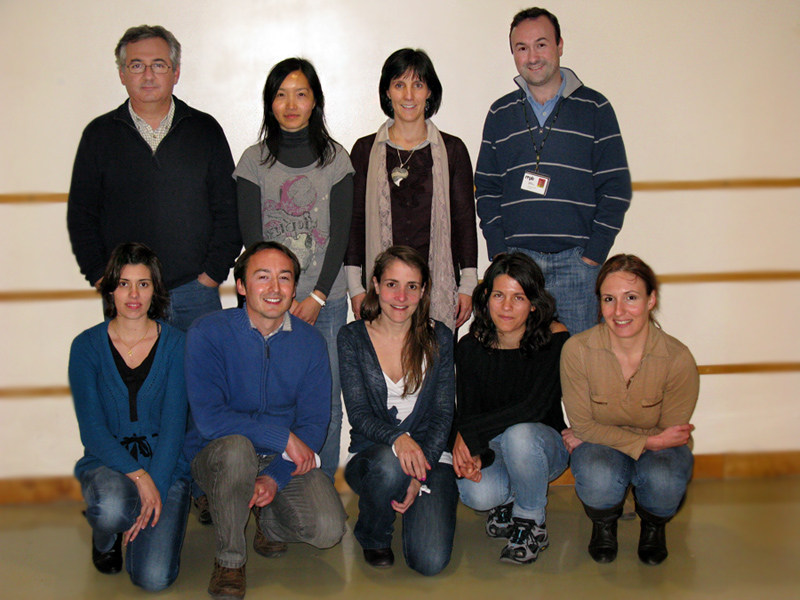
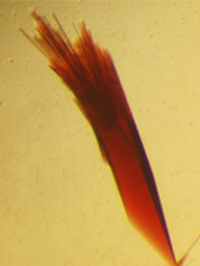
The membrane-bound complex cytochrome c nitrite reductase NrfHA Oxidation of membrane bound quinol molecules is a central step in the respiratory electron transport chains used by biological cells to generate ATP by oxidative phosphorylation. A novel family of cytochrome c quinol dehydrogenases that play an important role in bacterial respiratory chains was recognised in recent years. We have determined the first structure of a cytochrome from this family, NrfH from Desulfovibrio vulgaris, which forms a stable complex with its electron partner,...
Read more
Enzymes involved in the biosynthesis of thermoprotecting metabolites Enzymes classified in the nucleoside triphosphate-transferase family (PF00483) typically transfer nucleoside monophosphate (NMP) from nucleoside triphosphates (NTP) to an acceptor phosphoryl group belonging to a small molecule such as phosphocholine, hexose-1-phosphate or ribitol-5-phosphate. This activity leads to release of pyrophosphate and production of a nucleoside diphospho-acceptor that is subsequently utilized by glycosyltransferases in a myriad of reactions of vital importance for the cellular functions. Recently, a novel nucleotidyltransferase that uses CTP and L...
Read more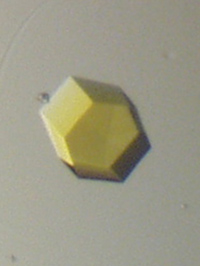
Membrane attached sulfide:quinone oxidoreductase (SQR) Inorganic sulfur compounds can serve as electron donors or acceptors in many phototrophic and chemotrophic prokaryotes, mostly with sulfate as the final oxidation product of this energy-yielding process. Besides the importance of these pathways for the global biogeochemical cycles in Earth, the metabolism of hydrogen sulfide has received a renewed interest, due to its proposed role as an eukaryotic signal molecule and in microbial pathogenicity. In chemolithoautotrophic microorganisms with a sulfide oxidation system, the electrons...
Read more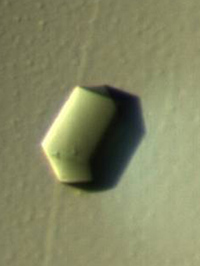
Complex of dissimilatory sulfite reductase DsrAB with DsrC protein Sulfate reduction is one of the earliest types of energy metabolism used by ancestral organisms to sustain life. A key enzyme in sulfur-based energy metabolism is the dissimilatory sulfite reductase (dSiR), which is present in organisms that reduce sulfate, sulfite and other sulfur compounds. This enzyme is also found in some phototrophic and chemotrophic sulfur oxidisers, where it is proposed to operate in the reverse direction (reverse sulfite reductase, rSiR). The...
Read more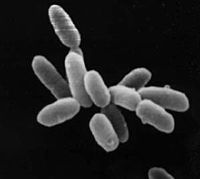
Enzymes involved in the biosynthesis of Membrane attached sulfidethermoprotecting metabolites Membrane transport systems play crucial roles in essential cellular processes of all organisms and comprise 5-15% of the genomic information. The Major Facilitator Superfamily (MFS) is one of the two largest families of membrane transporters and is found in Bacteria, Archaea, and Eukarya. We now have in our laboratory the equipment and technology needed to go from the gene level to structure. We are currently working on the expression of...
Read more